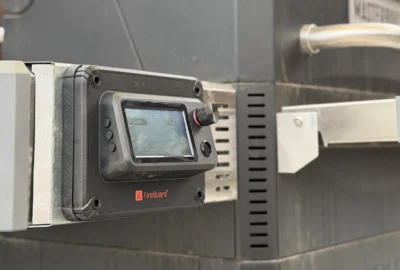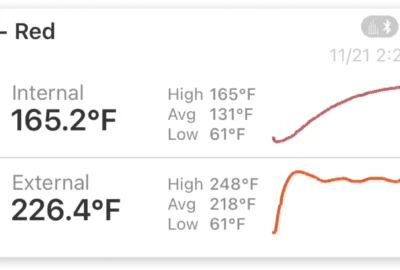Using your FireBoard
Why FireBoard supports so many different probes
On their website today FireBoard Labs offer no less than seventeen different probes for use with their products, namely the FireBoard 2 Series and Spark instant read thermometer. Given the large variety, it begs the question which one is the best one to buy? If you bought a series 2 FireBoard, it came with three, one ambient and two probes for taking the internal temperature of food. But that leaves three of the six ports unadorned with data that could be measured. And if you own one of these devices, you’re probably looking for more probes to measure the temperature of the steaks and chicken breasts for all of you dinner guests the next time you entertain… because you can.
Given the many probe offerings from FireBoard, what follows is a simple introduction to help sift through those choices. Most of the information that follows (and so much more) can be found at the FireBoard Knowledge Base. To better serve and educate their customers, FireBoard created this info rich Knowledge Base to answer questions related to their products. Many companies use these internally to assist in training, and customer service. Some companies, like FireBoard, open this information up for public use. For better understanding of the topics brought up in this blog post, visit the Knowledge Base. Also, for additional reading check out Ted Conrad’s post The Science of Thermocouples.
Temperature probes can be divided into two different, yet overlapping categories. The design of a probe will cover why a probe looks the way it does, and what its intended purpose is. The probe’s sensor type determines things like speed of measure, range of temperatures it can read.
Probe Design
The visual shape and appearance of a temperature probe is driven by the purpose that the probe was designed to perform. FireBoard offers two different primary probe designs: the ambient and the internal (or food probe).

FireBoard ambient probes L to R: Threaded 1/4, Smoker 1/2, Sous-Vide, Cold Storage, Standard Ambient
Ambient probes measure the air temperature around the end of the probe. The standard Ambient Probe, when used in a smoker or grill, needs to be used with a grill clip to hold the probe safely and securely in place. The Pro Series Thermocouple Ambient Probe comes with an alligator clip fitted on the end so it can be easily clipped into place a robust K-Type yellow plug end. These are only compatible with the FireBoard 2 Pro model. FireBoard also sells three different threaded ambient probes. The Smoker Probe has a ½” NPT threading that allows you to replace the thermometer gauge that came with your grill (most are standard ½” NPT). The Ambient Probe-Threaded and the Sous-Vide Probe both have the same ¼” BSP threading which allows you to place an ambient temperature probe anywhere you can safely drill a hole. The difference between these last two are the length, the Ambient is 2¼” and the Sous-Vide is 5”. Last in FireBoard’s line up of ambient probes is the Cold Storage Ambient Probe, which is designed, as you might guess, to measure cold storage, like walk-in coolers, freezers or even just a room. This model comes with a 20’ long cord and a temperature range of -58ºF to 248ºF.

FireBoard Food Probes L to R: Standard Food Probe, Competition Series Food Probes 3″ and 1″
Denoted by the “stabby” end, a food probe allows you to measure the internal temperature of what you are cooking for safety, and consistency. FireBoard offers four different probes for leaving in your food as you cook. The standard Food Probe has a 90º bend in the body of the spike and bottle-necks down from 4mm to 3mm about an inch up from the tip. The Competition Series Probe is 2mm diameter and 3” in length the thin diameter allows for quick reaction time and for a precise sample. Competition Series Short Probe is the same 2mm diameter as his big brother, just 1” in length. Lastly the Pro Series Thermocouple Food Probe is similar to the Competition Series in dimension 2mm in diameter and 3” long. The difference here is the thermocouple sensor and yellow plug end, which again is only compatible with the FireBoard 2 Pro model.

FireBoard Pro series probes have yellow Type-K plugs and Thermocouple : food probe above the ambient probe.
Sensor Type
The type of sensor inside a probe varies and determines the temperature sensitivity range and response time. FireBoard offers probes with two different types of sensors: the Thermistor and Thermocouple. (RTD probes are really a third type, however these are not sold standard anymore and FireBoard recommends Thermistors or Thermocouples for most applications). The Thermocouple can measure a wider range of temperatures, -148 to 1202ºF, compared to the thermistor range: 0ºF to 572ºF. Thermocouple probes are more expensive, primarily because of their robust construction and connectors. Thermocouples react very fast and provide excellent readings for extremely hot temperatures, such as pizza ovens.
The FireBoard Spark actually has a built in, swivel out thermocouple probe. This particular thermocouple has been designed to read ultra fast to support near instantaneous readings. Spark also has a single channel probe port for thermistors to support longer cooks, just like the FireBoard 2 Series.
Read more about our probe types on our Knowledge Base page here.
Probe Care and Maintenance
Temperature probes, no matter the variety, are designed to be exposed to excessive heat. But they are delicate instruments and require some TLC to extend their life and service your probes give you.
Keep your cords kink and tangle free. Tight bends in the cord can lead to incorrect readings or even failure of the probe. FireBoard has designed a pouch that neatly houses a delicately rolled probe cord. The pouches have a small port for the tip of the probe for safe keeping.
Do not expose your probe (or probe wires) to heat in excess of their maximum temperature rating: 572ºF for Thermistors, 716ºF for RTD and 1202ºF for Thermocouples. In general, be mindful of placing your probes near open flame/hot coals or heating elements–remember there are limits.
To clean any food residue or buildup, use a soapy cloth and warm water to wipe your probe clean. Probes should not be submerged in water or placed in a dishwasher. Doing so risks damaging the sensor inside of the probe. From normal use, being exposed to high temperatures, will naturally discolor the stainless steel.

The short and thin size of the Competition Series Short Probe enables it to accurately measure small spaces, like the succulent space between rib bones.









Leave a reply